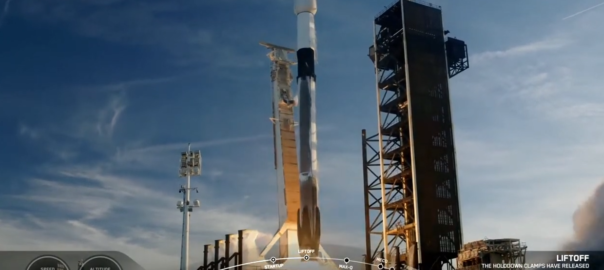Fleet Space Technologies, a leading Australian space exploration company, has announced the successful deployment of its next-generation Centauri-6 satellite on SpaceX’s Bandwagon-1 mission, bolstering its end-to-end mineral exploration solution, ExoSphere.
The satellite was launched aboard a SpaceX Falcon 9 from Launch Complex 39A at the Kennedy Space Center in Florida, USA. The addition of Centauri-6 to Fleet Space’s satellite constellation will play a vital role in servicing the global demand for ExoSphere, while also building capacity to deliver advanced SATCOM capabilities with microsatellite architectures.
The successful launch of Centauri-6 is the latest development from Fleet Space after a period of exponential growth and innovative breakthroughs unlocking new capabilities in the global space sector, it says.
Rapid global adoption of Fleet Space’s satellite-enabled mineral exploration solution, ExoSphere, has been the catalyst behind the company’s sustained innovation in space technologies and growth over the past year. Over 40 exploration companies – including Rio Tinto, Core Lithium and Barrick Gold – have used the technology to complete 300-plus surveys for a variety of critical minerals across five continents, according to the company.
“Humanity’s expanding satellite infrastructure is rapidly unlocking new capabilities that can help to address some of the most pressing challenges facing our planet,” Flavia Tata Nardini, Co-Founder and CEO of Fleet Space, said. “At current rates of mineral discoveries and production, our net-zero goals and clean energy future are unattainable in the coming decades. Leveraging the latest advances in space technology, AI, and geophysics – Fleet Space is demonstrating a path to accelerate mineral exploration in a more data-driven, scalable and sustainable way. Centauri-6 is a portal into a future of efficient, mass-scale satellite manufacturing that can unlock previously unimaginable satellite-enabled solutions to hard problems on Earth.”
Centauri-6 has been designed with multiple upgrades to optimise the resilience and durability of the satellite while also enhancing the overall capacity of Fleet Space’s low-Earth orbit (LEO) satellite constellation to support the growing demand for ExoSphere, the company says. Centauri-6 has greater uplink capacity and redundancy, enabling more resilient data transfer from Fleet Space’s satellite-enabled seismic sensors on the ground. The satellite has also been designed with an ion electric propulsion system powered by solar panels to provide thrust in the vacuum of space. Centauri-6’s design also leverages 3D-printed components – including the 3D-printed metal patch antenna Fleet Space pioneered on earlier Centauri satellites.
Matt Pearson, co-Founder and Chief Exploration Officer at Fleet Space, said: “Innovation in microsatellite architectures is advancing at an unprecedented rate, unlocking new capabilities across sectors at scale. The reprogrammability of our Centauri satellites enables in-orbit software updates that can deliver all-new capabilities, as we recently demonstrated with Centauri-4 – making it the world’s smallest known voice-enabled satellite. This marks a significant leap forward in the history of spacecraft – making a future with more energy-efficient, high-performing, flexible, and resilient microsatellite infrastructure within reach for the global space sector.”
ExoSphere, Fleet Space’s flagship mineral exploration technology, combines the latest advances in satellite connectivity, edge computing, AI and geophysics to deliver 3D subsurface models of a survey area in days with near-zero environmental impact. To generate the 3D models, Fleet Space’s patented satellite-enabled seismic sensors – called Geodes – are distributed into an array across a survey area, then the data is transmitted and processed by Fleet Space’s satellite constellation in LEO, providing near real-time access to survey results for exploration customers around the world, the company claims. Traditionally, seismic data acquisition and processing has taken months or years before it can be used as part of an exploration campaign. By delivering 3D subsurface models up to a depth of 2.5km in days, Fleet Space is radically reducing the time and resources needed to accelerate mineral discovery in support of the clean energy transition.






